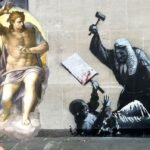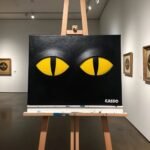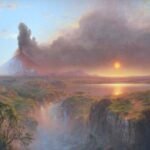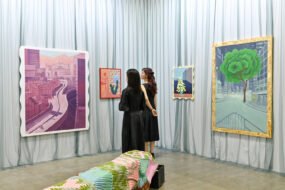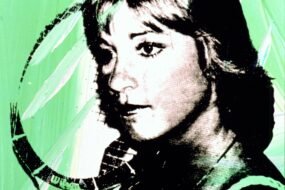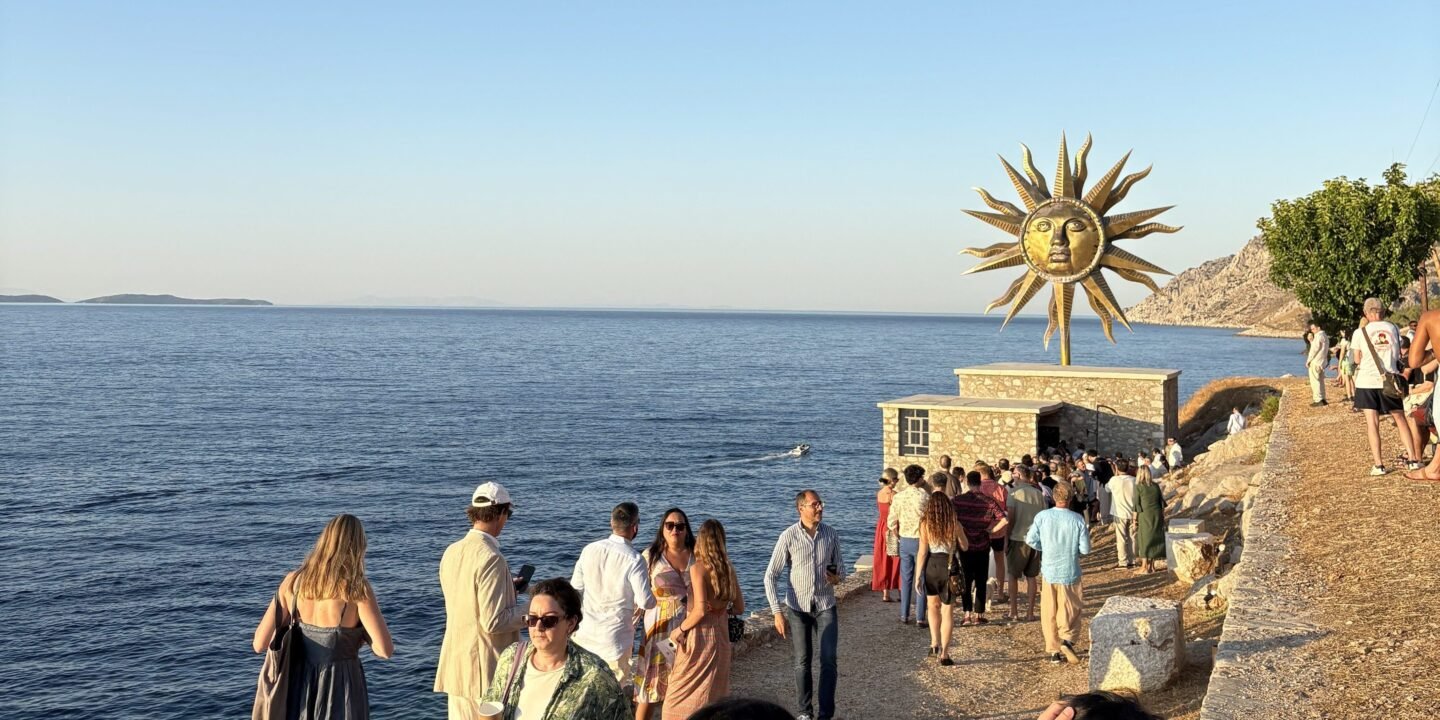
Sofia Rozaki’s densely symbolic, at times surreal works are animated by a similar interplay of ancient forms and everyday rituals, local and global sensibilities and historical motifs filtered through contemporary visual languages. Her multilayered compositions weave personal and collective narratives with generational touchpoints, opening space to imagine alternative futures while probing themes of identity, memory, trauma and sexuality.
More direct reflections on the impact of politics and economics in Greece appear in the work of Danae Io, whose practice explores the entanglements of surveillance, infrastructure and historical memory. Through film and sculpture, she examines the slow bureaucratic decay of Thebes, where ancient ruins stand beside the gradual decline of local industry, drawing parallels between past collapse and present-day realities. Her work is closely attuned to the built environment and its fractures, mapping tensions between historical layers and contemporary conditions that resist any linear notion of progress. In one installation, a group of credit cards forms part of an unsettling mirroring device—a panopticon—that reflects and distorts human behavior, revealing how economic systems shape and control it. The binaries of consumption and memory, recording and erasure appear unstable and shifting, like the flicker of a surveillance feed or the fading signal of a used phone card.
This is not the first time the DESTE Foundation has played a key role in promoting contemporary Greek art. The Athens-based foundation regularly organizes exhibitions and supports emerging artists through initiatives such as the DESTE Prize, awarded biannually to a young Greek artist. “In a Bright Green Field” builds on the legacy of earlier exhibitions like “The Same River Twice and The Equilibrists” (2016), also organized by DESTE and the New Museum in collaboration with the Benaki Museum.
In addition to its awards and robust exhibition program in Greece and abroad, the foundation also engages with other disciplines. Its destefashioncollection artist commissions, for instance, have already resulted in two major exhibitions, debuting at the Benaki Museum in Athens before traveling to the Bass Museum in Miami, and in the aforementioned interview with Observer, Joannou hinted intriguingly that DESTE’s next initiative will engage with design.
What’s on in Athens
There is plenty going on in Athens this season beyond the festivities on Hydra, starting with a memorable Marlene Dumas exhibition, “Cycladic Blues,” at the Museum of Cycladic Art. Fresh off becoming the highest-selling living woman artist at auction—Miss January fetched $13.6 million at Christie’s in May—Dumas puts fourteen ancient Cycladic figurines from the museum’s permanent collection in measured dialogue with her canvases. The millennia-old idols, long read as symbols of fertility and femininity, resonate against her modern figures, which shift between vulnerability and strength, seduction and instinct as they probe questions of gender and race. Curated by Douglas Fogle in close collaboration with the artist, the show assembles works Dumas personally selected from across her oeuvre.


A second, equally compelling exchange between contemporary art and antiquities unfolds at the Acropolis Museum, just below the Parthenon. There, Iraqi-American artist Michael Rakowitz foregrounds the fragility of archaeological heritage and the cultural erasure that follows war, neglect and political turmoil. Artifacts from the Middle East and the wider eastern Mediterranean share space with his painstaking reconstructions of objects looted or lost, inviting pointed comparisons with Greek and Cypriot patrimony. By weaving together stories of exile, migration, fractured civilizations and the value of cross-cultural exchange, Rakowitz transforms the archaeological setting into a forum for reckoning with loss, memory and repair.
“Allspice” is the first of a planned trilogy of exhibitions, “Michael Rakowitz & Ancient Cultures,” developed through a collaboration between the Hellenic Ministry of Culture, the Acropolis Museum and the NEON Organization.


The National Museum of Contemporary Art Athens, meanwhile, turns its gaze toward non-anthropocentric perspectives with the exhibition “Why Look at Animals? A Case for the Rights of Non-Human Lives.” Spanning multiple floors, the show centers on the rights and well-being of animals, calling urgent attention to the need to recognize and defend non-human lives in a world built on anthropocentric systems that exploit, oppress and brutalize them.
Among the most haunting exhibitions tied to the theme is Janis Rafa’s “We Betrayed the Horses,” which investigates humanity’s longstanding desire to dominate, control and subjugate powerful creatures. The piece reveals the inhumane treatment these intelligent animals endure when forced to perform for human ambition, drawing a parallel to similar dynamics of control, cruelty and emotional manipulation within human relationships—particularly in the realms of love and sexuality.


Continuing Rafa’s exploration of care and betrayal, sensuality and domination, the work considers the colonization of the animal world, the physical subjugation of bodies and the non-consensual relationships imposed by human desires. Marking Rafa’s first institutional solo exhibition, the installation evokes the presence of horses not through direct depiction but through scent and carefully arranged objects—human-made tools designed to tame, control or express affection, yet ultimately misrepresenting love itself.
Emma Talbot’s newly commissioned textile installation Human/Nature (2025) is equally striking—a monumental, immersive work dense with hydrosynthetic references and near-hallucinatory symbolism. In this kaleidoscopic composition, Talbot proposes a more holistic connection between humans and other species, one that acknowledges our shared energetic interdependencies. Moving beyond the human perspective, she attempts to enter the animal mind, imagining a world as seen and felt through non-human consciousness in an exercise in empathy and expanded awareness that challenges the primacy of human experience.





